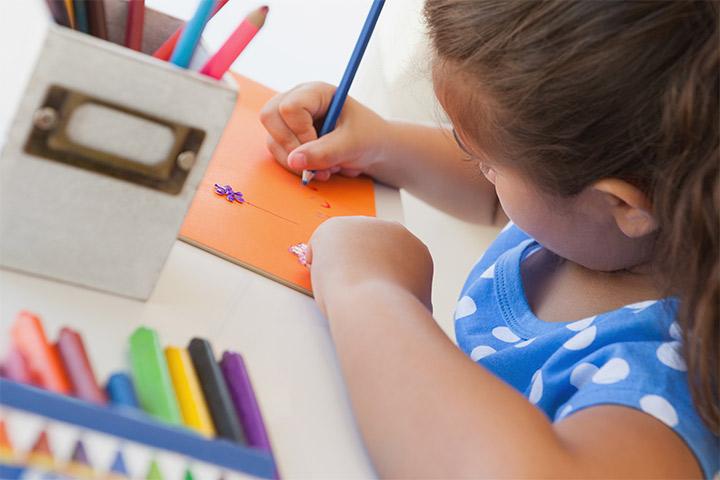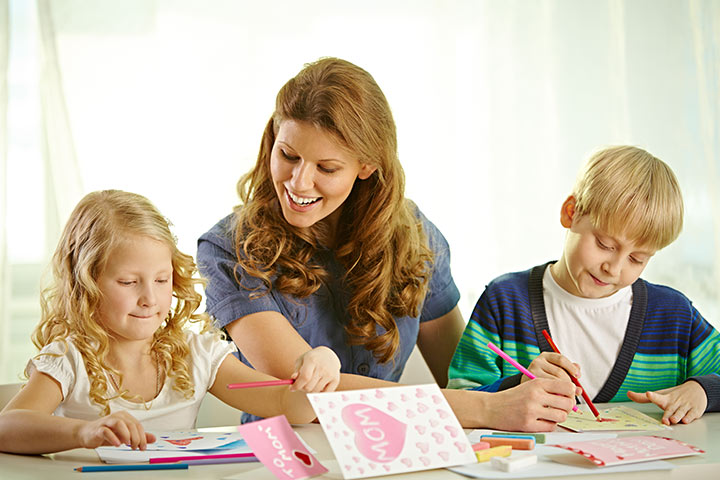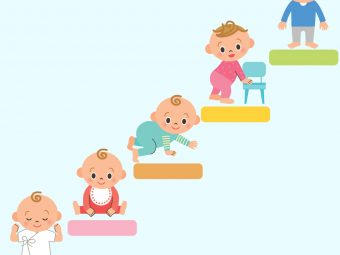
Image: ShutterStock
‘Self-esteem is the reputation we acquire with ourselves.’ – Nathaniel Branden
Every parent wants to build self-esteem in children. They would love to watch them grow confident of their abilities and respect themselves for who they are. However, sometimes children seem to exhibit poor self-worth due to different reasons. This may be discouraging for parents, but it is important to understand that they play a critical role in building their children’s personalities. Children’s behavior starts being influenced from a young age, so you need to devise self-esteem strategies from the beginning.
Read to know the different ways to build your children’s self-esteem and activities that would encourage positive personality development.
What Is Self-Esteem?
In simple terms, self-esteem is what we think of ourselves. Our sense of ourselves in the world emerges as a developmental process over time beginning with our earliest relationships.
Children who have a positive sense of self and are more confident and hopeful in their interactions. Children whose sense of self is less positive may struggle with anxiety and feelings of hopelessness.
Our sense of ourselves in the world has its roots in early development but changes and grows over time in relationships throughout our lives (1).
Building Self-Esteem In Children
Helping your child to work through difficult moments with you and other people in their lives is the most effective way to build a positive sense of self. Your child learns that when things go wrong, they have the ability to make things better. This in turn gives them a sense of effectiveness in the world. The process of repairing mistakes gives energy to your child and your relationship. It gives them a sense of resilience and hope. In contrast, avoiding conflict in an effort to make things smooth can create a sense of anxiety and fear of disruption.
Self-esteem in children begins to develop very early, and the parent plays a critical role in building it (2) As parents are the most influential people in a young child’s life, what they say or do and how they make the child feel impacts their child’s development. Here are a few ways in which you can help your child develop a healthy sense of self (3) (4).
- When children feel loved and accepted unconditionally, it helps them to develop a positive sense of self. When you speak kind words, our children will feel loved and good about themselves. A hug, kiss, or even a simple smile can be enough to let your child know you love them.
- Focus on the child’s strengths and not on their flaws. Encourage them to use their talents. At the same time, help them identify things that are challenging for them and find ways to work on them.
- Let your child understand that it is not only okay but important not to succeed sometimes. Teach your child to be comfortable with failure. Learning new skills can be empowering. Teaching the child new skills, even minor ones such as gardening, doing the dishes, creating a presentation, or changing a tire, can boost their sense of self-esteem.
- Having the power to choose can help to build a positive sense of self. It helps to teach them to have a sense of responsibility for their decisions. Start small, with simple choices, before giving them responsibility for more significant life choices.
 Quick tip
Quick tip- When you solve a problem, big or small, you experience a feeling of accomplishment. So the next time your child has a problem, give them space to try to solve it themselves. Doing so will boost their confidence and self-esteem.
- Talk to your children about the importance of a healthy lifestyle and taking care of themselves. If your children show an interest in an activity, sport, or learning a new skill, if the activity is within reason and accessible, encourage them to try and experience it. For instance, if the child wants to learn martial arts, encourage them. But tell them that it needs practice and discipline, which might means waking up early, strength training, and hours of long hours of practice.
- Encouragement is good, but excessive nonspecific praise can do more harm than good. Overusing phrases such as “good job” or “awesome” to praise the child may backfire. Simply noticing your child’s activities and naming them specifically can do more to boost self-esteem than non-specific praise. For example, rather than comment on a child’s drawing with “great job” you might say, “I notice you used a lot of purple in your drawing.” Your interest and attention are more valuable than general praise, which in excess can feel meaningless.
Self-esteem Games And Activities For Kids
Here are a few games and activities that can build up a child’s self-confidence.
1. ‘I am’ activity
Is your child proud of their achievements or do they tend to be excessively self-critical?
You can explore the question with this activity.
You will need:
Chart or drawing paper, cutouts of adjectives from magazines, glue, color pen or sketch pen
How to:
- Ask your child to list down words that describe them on a piece of paper. It can be negative or positive.
- Then ask them to focus only on the good things that people have said about them and make a list of that.
- Paste the photo of the child in the center of the drawing or chart paper.
- Ask the child to fill the area around the picture with positive words, adjectives that she can relate to.
- Put the drawing sheet or paper in her room, for reinforcing positive beliefs about the self.
2. List your wins in life
An effective way to boost the child’s self-esteem is to remind them of their successes.
You will need:
A sheet of paper, pen
How to:
- Give your child a pen and paper or notebook.
- Start by writing down the list of successes in life on the front page, leaving space at the bottom to add more later.
- To remind the child of her potential, you can also ask her to list down her wins every day, before she goes to bed.
- Emphasize that failures are not only ok, but they are important. Take time to notice when your child successfully works through a difficult moment.
 Quick tip
Quick tip3. I am afraid but…
Fear is a typical feeling for children. Here is an activity for children to face their fears and talk about them.
You will need:
Paper and pen
How to:
- Ask your child to list out the things she is afraid to do. For instance, she could be afraid to go to swimming classes. Or she is scared of doing a class presentation.
The sentences should be something like this:
I am afraid to enroll in the swim team because …
I am afraid to talk to so and so because…
- The second step is to imagine doing the thing they fear. Imagine registering for that swim team or talking to that person.
- Every time the child writes down what they are afraid of, ask them to write what the possible outcomes would be if they tried it. And next to the negative outcome, get them to write something about possible positive outcomes.
4. Mother-daughter self-esteem activity
Mother-daughter relationships tend to be powerful and also filled with fraught moments. This activity taps into the mother-daughter bond to work on the girl’s self-esteem.
You will need:
Poster or chart papers, sketch pens or color pens
How to:
- Make two posters with the word ‘ME’ stenciled on them, so that you can fill the letters with text.
- Create another poster with the words “MY MOM” and another with “MY GIRL” stenciled on them.
- Give the child one “ME” poster and the “MY MOM” poster and ask her to fill it with positive things about herself and her mother. Let the mom work on the remaining two.
- Let them exchange the posters or read out the compliments they have for each other.
5. Chore with a purpose
A child’s self-esteem can get a quick boost when they know someone trusts them. What better way to show your child that you trust them than by giving them responsibility for a chore.
How to:
- Make a list of things that your child can do to care for the environment and animals around them. For example, walking the dog, watering the plants, or mopping the floor.
- Every time the child completes the task successfully, compliment them but do not overdo it.
- If they make mistakes, help them correct the mistake but do not dwell on it. Chores can contribute to building your child’s self-confidence.
6. Visualization
Our negative thoughts can be so overpowering sometimes that we cannot imagine something nice. If your child is going through such a phase, this activity can help.
You will need:
A calm or quiet place to relax.
How to:
- Find out why your child thinks they are not good or what they are afraid of doing.
- For example, if they are worried about school or performance in a sport, focus on that.
- Ask them to imagine and write down what the ideal scenario, in either case, would be.
- Then, ask your child to close their eyes and imagine the ideal scenario, and how she would feel if it were real.
- Ask them to write down how they felt when they visualized the ideal situation and what they thought about themselves.
7. Changing self-talk
Negative self-talk is a sign of low self-confidence. It may help to point this language out and help your child not to speak negatively about themselves. This activity may help change the negative conversations with the self into positive ones.
You will need:
Pen and paper
How to:
- Make two columns on a sheet of paper. On one side, write “Bad or Negative self-talk” and on the other, write “Good or Positive self-talk.”
- Ask your child to list all negative statements that they make about themselves under the Bad self-talk column.
- Next, ask your child to turn the negative statements into positive ones. The statements should be clear and specific to the talents or abilities of your child.
You could help by giving the child an example in the beginning. You can share how you change your negative self-talk into a positive one and how that helps you.
Frequently Asked Questions
1. What are the signs of low self-esteem in a child?
Signs that may indicate low self-esteem in children include (5):
- Avoids a challenge or task without trying it or giving up too soon
- Cheats or lies to avert defeat
- Acts baby-like or becomes too bossy or inflexible
- Makes excuses and blames others or external forces.
- Socially withdrawn, seems disinterested in activities, and scores low academic grades
- Sad, angry, and frustrated or quiet most of the time
- Makes self-critical comments, such as “I cannot do anything right.”
- Finds it difficult to accept either praise or criticism and is over-sensitive about others’ opinions of them
- Susceptible to negative influences from friends or social media.
2. What causes low self-esteem in a child?
A child may develop low self-esteem due to (6):
- Bullying by other children
- Trauma such as physical or sexual abuse, disasters, severe health issues, or loss of a loved one
- Shaming or fear-based teaching techniques applied by parents or teachers or high-performance pressure
- Parents who disapprove of them most of the times
- Social media influence may develop self-doubt in children and make them think they are not as good as others (7)
As parents, you play a significant role in building self-esteem in your children. The way you encourage them to get back up and console them every time they fail motivates them and induces a sense of confidence. You can build self-esteem in children by helping them overcome their anxiety and fear. They need to believe that making mistakes is okay as long as they learn from them and correct them. So you may try some of the above-mentioned activities and games to build self-esteem in children and make them grow into confident individuals.
Infographic: Identifying If Your Child Has Negative Or Positive Self-Esteem
It is essential to understand if your children have low self-esteem. If the right help is not given to them on time, it may affect their mindset as an adult. Observe them and identify their behavior through this infographic so you can boost their morale from the very moment. Illustration: Momjunction Design Team
Get high-quality PDF version by clicking below.
Download Infographic
Key Pointers
- Self-esteem is shaped by a person’s perception of themselves and others, which can be influenced by early-life experiences.
- High self-esteem in children leads to optimism and confidence, while low self-esteem can cause stress.
- Parents play a significant role in shaping their child’s self-esteem.
- Allowing children to make choices and tackle challenges can boost their confidence.
- Activities that promote self-confidence and pride can help raise self-esteem.
References:
- DOES HIGH SELF-ESTEEM CAUSE BETTER PERFORMANCE INTERPERSONAL SUCCESS HAPPINESS OR HEALTHIER LIFESTYLES?
http://citeseerx.ist.psu.edu/viewdoc/download?doi=10.1.1.508.2792&rep=rep1&type=pdf - Self-esteem in children: 1-8 years.
https://raisingchildren.net.au/toddlers/behaviour/understanding-behaviour/about-self-esteem - Helping Your Child Develop A Healthy Sense of Self Esteem.
https://healthychildren.org/English/ages-stages/gradeschool/Pages/Helping-Your-Child-Develop-A-Healthy-Sense-of-Self-Esteem.aspx - Your Child’s Self-Esteem.
https://kidshealth.org/en/parents/self-esteem.html - Signs of Low Self-Esteem.
https://www.healthychildren.org/English/ages-stages/gradeschool/Pages/Signs-of-Low-Self-Esteem.aspx - Why the Causes of Low Self-Esteem May Be Rooted in Your Childhood.
https://compasscounseling.org/why-the-causes-of-low-self-esteem-may-be-rooted-childhood/ - Social Media and Self-Doubt.
https://childmind.org/article/social-media-and-self-doubt/



















